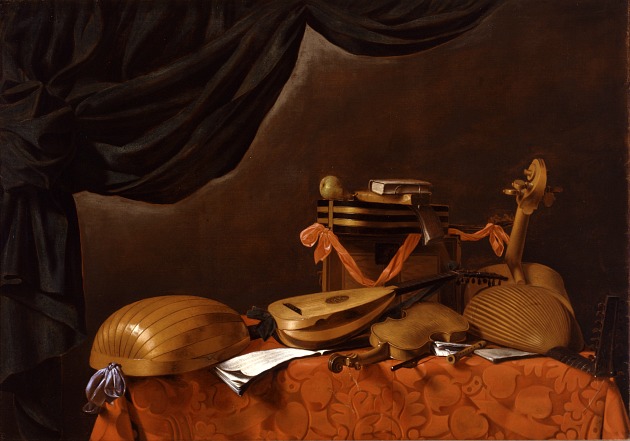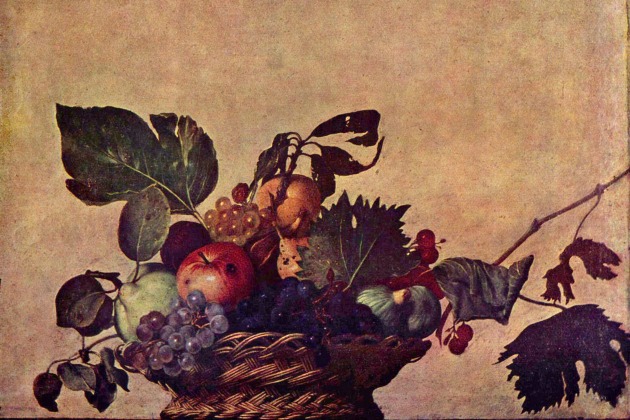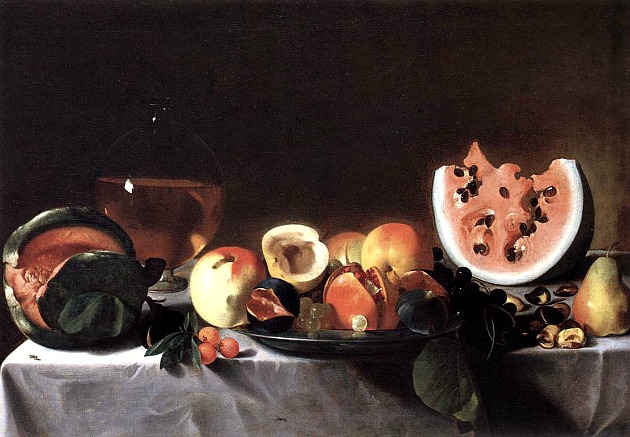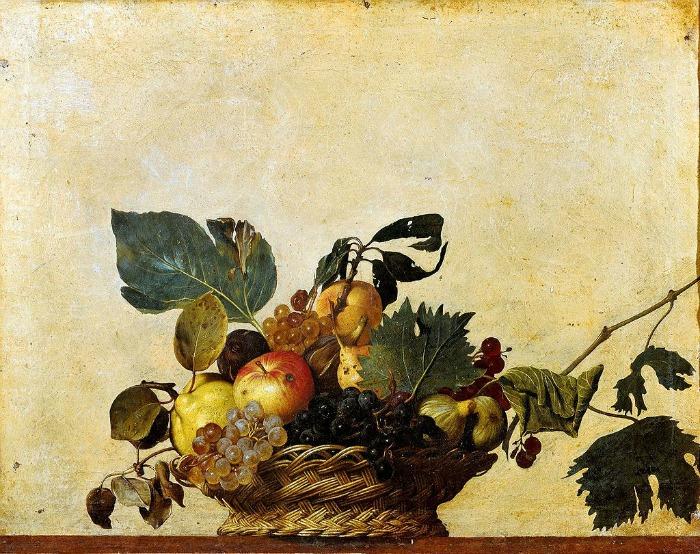The great age of still life painting in Italy, as in Holland and Flanders, Spain and France, occurred during the seventeenth century, the age of the Baroque. Of these different schools, the Dutch, Flemish and Spanish masters of still life have long been justly celebrated. The reputation of French still life painting has always enjoyed the illustrious association of Jean Siméon Chardin (1699-1779). By contrast the Italian tradition of natura morta, or still life, is less familiar: most admirers of European art would perhaps be surprised to find out that Italy did in fact produce a still life specialist, Evaristo Baschenis, of comparable genius to Chardin.

What is so exceptionally inviting about Italian still life painting is that it is based on an aesthetic of natura in posa (nature suspended). In a brief but influential article of 1950, eminent art historian Roberto Longhi advanced a radically new perspective of Italian still life painting, rejecting the possibilities that is was either an inheritance from antiquity or a relatively late development dependant on Netherlandish precedents and prototypes. Although couched in historical terms, Longhi’s distinctions partake liberally of aesthetic observances. Simply put, this means that he really took the time to look at the pictures.
An Important Reappraisal
It was a process that led him to an important distinction: while some still life paintings were conceived for decorative purposes only, providing ample evidence of the painter’s technique, others abandoned 16th-century formality entirely to create pictures in a fresher vein. These more modern pictures were produced by a wave of artists seemingly firm in the conviction that the simplest objects, acutely observed, possess potentialities of expression that transcend the narrow preconceptions of the still life genre.
It is a charmingly bullish and daring painter that allows a still life picture, often cataloguing the quaintest accoutrements of daily life, to assume the same importance as the major genres of sacred and historical painting. In a famous dictum recorded in 1620 by the Marchese Vincenzo Giustiniani, Caravaggio asserted that it cost him as much effort to make a good painting of flowers as figures. As an artist deeply drawn to the representation of nature suspended, Caravaggio refuted the hierarchy of genres and challenged the best artists to ‘paint well and to imitate well natural things.’

An Unknown Master
Caravaggio’s empirical approach to nature became one of the foundations of seventeenth-century Italian painting. It paved the way for artists to draw on the natural biases and experiences of their lives for their processes of invention. Take Pensionante del Saraceni, a painter of unknown nationality, active in Rome during the second and third decades of the seventeenth century. So anonymous is he that in art history books he goes only by the sobriquets pensionante (roomer) and coinquilino (fellow-tenant). And yet he produced a small body of high quality paintings that ooze character and drip individuality.

Take the Still Life with Fruit and Carafe now in the National Gallery of Art in Washington, a painting so fragrant, juicy and mouth-wateringly seductive that it positively embraces the senses. The arrangement of the foodstuffs is highly naturalistic: apples sit alongside gleaming white grapes, splitting pomegranates nestle by cushiony figs. Everything is placed close to the front of the picture plane and a delicate Roman light ripens and softens the edges of the forms: notice how the outline of the apple on the pewter plate seems just to blur and melt away. This is utter painterly confidence: not only in the technical mastery and the subtle geometric cohesion (note the repetition of rounded swelling forms) but also in the honest presentation of the simplest things as the most remarkable subjects, worthy of paint, canvas and admiration.













